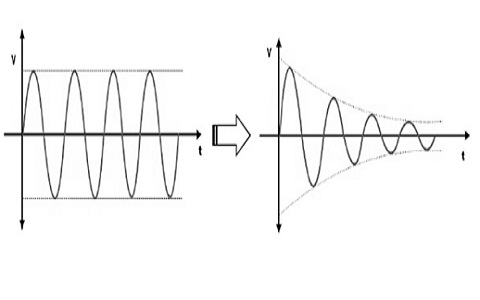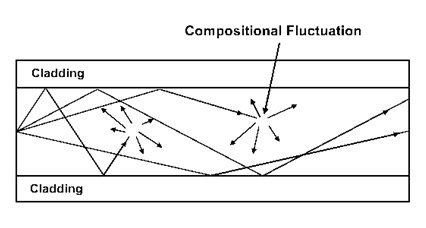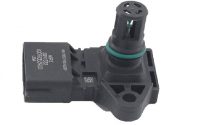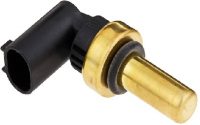What is Attenuation : Different Types & Its Causes
The attenuation is a telecommunication word which refers to reduction within signal strength. This can occur while transmitting signals over lengthy distances. It can be calculated in dB (decibels) in terms of voltage. The function of this is quite opposite to amplification when a signal is transmitted from one place to another place. Once the signal attenuation is extremely high, and then it turns into incoherent. So, most of the networks use repeaters for increasing the signal strength at normal intervals.
What is Attenuation?
Attenuation meaning is the reduction of signal strength and it can occur in any kind of signal like analog otherwise digital. In some cases, it can be called attenuation loss; because this is a normal effect of a signal while transmitting over long distances. In some cables like conventional or FOCs (fiber optic cables), this can be identified in terms DBs (decibels) for each foot, kilometer, or thousand foot, etc. The cable efficiency is high when the attenuation for each unit distance is less.

When it is required to send out signals over long distances through any cable, then one (or) more repeaters must be included with the length of the cable. Because repeaters play a key role in enhancing the strength of the signal to conquer this. So this enhances the highest range of achievable communication.
Causes of Attenuation
This can be occurred in wired as well as wireless transmissions due to signaling issues. There are several examples are there in digital network circuitry & telecommunications. This can be occurred due to the following reasons.
Transmission Medium
An electromagnetic field can occur around the transmission once all the signals broadcasted down, then energy losses will occur in the downside of the cable based on the length & frequency of the cable.
Crosstalk
Crosstalk from nearby cable can cause this within cables like conductive metal or copper.
Connectors & Conductors
Attenuation can take place when a signal flows across dissimilar conductive standards & connector surfaces. The circuits can be attenuated by using repeaters for signal boosting via amplification. When copper conductors are used, then the high-frequency signal and additional attenuation can occur with a length of cable. Present communications use HFs (high-frequencies), thus the mediums which have a smooth-attenuation in all frequencies like fiber optics are employed instead of normal copper circuits.
Noise
Additional noise on N/Ws (networks) such as RFs (radio frequencies), leakage in wires, electrical currents can interfere by the signal to cause this. If the noise is more, then this will be more.
Physical Environs
Physical environs which include installation of improper wiring, wall barriers, the temperature can alter the transmission, then attenuation can be caused.
Travel Distance
When the transmission in a cable travels for long distances like from source (current place) to destination (connection supplier), then it experiences more noise while traveling.
Different Types
There are different types of attenuations which include deliberate, automatic, and environmental.
Deliberate
This kind of attenuation can happen wherever a volume control can be used to reduce the level of sound over consumer electronics.
Automatic
This kind of attenuation is used to stop the distortion of sound in audio equipment and TVs by detecting automatic level to activate attenuation circuits.
Environmental
This kind of attenuation relates to loss of signal power because of the transmission medium, whether that can be connected to copper wire, fiber optic or wireless.
Attenuation in Optical Fiber
Attenuation can occur to any kind of signal like fiber, copper, satellite, fiber, etc. In the Fiber signal, it travels on HF (high-frequency) wavelength light which can be protected by glass tubes. When light is opposed to noise sources such as RFs, electricity, the attenuation rate of fiber connections has extremely low.
The proper functioning of optical data link mainly depends on the light which is changed t reach the receiver by sufficient power to be de-modulated properly. This is the drop within the light signal power while it is transmitted. This can be occurred due to some passive media components which include connectors, splices of cables, and cables.

Even though this is considerably lower for this cable when compared with other media. In fiber optic, the transmission can be done in two modes like single-mode and multi-mode. But, attenuation can occur in both the transmission modes. So this can be avoided by maintaining enough light in an optical data link.
The size of single-mode fiber is very small and the internal light reflection can travel through only a single layer. The interfacing of this optic mainly uses laser lights and generates light in a single wavelength. The bandwidth of this fiber is high & carries signals for long distances.
The size of multimode fiber is large and the internal light reflection can travel through a multi-wavelength. The interfacing of this optic mainly uses LEDs & generates light in different wavelengths and causes signal dispersion.
When light reflection travels within the fiber core then it emits into the cladding, higher-order mode loss results. Mutually these issues will stop the distance of transmission in multimode compared with single-mode. As the maximum transmission distance increases, it can result in a signal loss & causes variable transmission.
Attenuation Coefficient
The attenuation coefficient of FOC (fiber optic cable) is one of the most significant parameters. In a huge amount, the distance of relay can be decided within the optical transmission.
The attenuation coefficient of fiber can be 0.36dB/km in wavelength of 1310nm as well as 0.22dB/km in wavelength of 1550nm.
Attenuation Measurement
Generally, the amount of attenuation can be expressed in dB (decibels) units.
If the signal power ‘Ps’ at the source of a circuit & the signal power ‘Pd’ is at the destination, followed by Ps is greater than Pd. The power attenuation ‘Ap’ in dB can be denoted by using the following attenuation formula
Ap = 10 log10 * (Ps/Pd)
Attenuation in terms of voltage can also be expressed. If the voltage attenuation is ‘Av’ in dB, source signal voltage is ‘Vs’ & the destination signal voltage ‘Vd’ then the equation will be
Av = 20 log10 * (Vs/Vd)
Thus, this is all about an overview of attenuation in fiber optic cable. It is a reduction of signal potency and can be calculated in dB. It reduces the maximum speed connections accessible because of the requirement of numerous recur transmissions. Here is a question for you, what is trp operon attenuation?





